|
|
|
The Loss of an Institution
The following represent my own views. I believe that I have leaned a little about “The Move”, and I thought that I would share it with you.
You will find many websites out there dedicated
to bashing Art Modell and the city of Baltimore. Others will pay tribute to
the return of the franchise to Cleveland with Al Lerner. 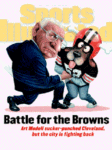 This
site is dedicated to the history of football in Cleveland. Part of that history
unfortunately includes the nightmare of 1995. Art Modell, owner of the Browns,
announced that the team would play in Cleveland no longer. He spoke of a deal
that he struck with the city of Baltimore. He spoke of approval by the NFL
owners to move the team. He spoke of a lot of things, but the one thing that
he didn’t speak of was a true explaination. He left Cleveland silently, and
left fans wondering why.
This
site is dedicated to the history of football in Cleveland. Part of that history
unfortunately includes the nightmare of 1995. Art Modell, owner of the Browns,
announced that the team would play in Cleveland no longer. He spoke of a deal
that he struck with the city of Baltimore. He spoke of approval by the NFL
owners to move the team. He spoke of a lot of things, but the one thing that
he didn’t speak of was a true explaination. He left Cleveland silently, and
left fans wondering why.
While Modell gave no explanation, the media was quick to give their spin on the issue. These renditions were mostly Art and Baltimore bashing, which is what the public wanted and is what sold newspapers. But they left something missing. Some part of the story wans’t being told. There is no way that someone would move a team just because of a sweeter deal. In my exhaustive search, I came across a book by Michael G. Poplar entitled Fumble! The Browns, Modell, and the Move. Mike Poplar isn’t just another media chronie, he was the accountant for the Cleveland Stadium Corperation. This company was in charge of managing Cleveland Stadium, and it’s president and CEO was Art Modell.
In order to better understand the whole story,
you need to understand the lease that Stadium Corp. had with the city of Cleveland.
In 1973, Modell and the city of Cleveland were negotiating a new lease on the
stadium for the Browns. The stadium had been a financial burdon on the city
since it was built, losing money every year at an average of $500,000. The
city was looking to do away with that financial drain, and Art Modell was confident
that he could turn the stadium into a money maker for the city. Therefore,
a 25 year lease of the stadium was signed, giving Art Modell complete control
of the Lady on the Lake. That meant that HE would be the landlord of the Indians,
special events, and even HIMSELF (in the form of the Browns)!!! In return,
he agreed to absorb all of the losses from running the stadium, and if
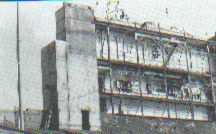
This lease was quite complicated. It included many other stipulations, such as Modell providing $10 million in improvements to the aging building and selling loge seating. In order to manage this beast of a project, Modell founded the Cleveland Stadium Corperation (abbreviated Stadiumcorp). In order to comply with the neccessary improvements to the stadium, Modell borrowed the neccessary money in the name of Stadiumcorp. This was the way of Modell. He was confident enough in his own abilities to risk a long term loan. This would later be his biggest downfall. He used this money to build a new state-of-the-art scoreboard and remodel the loges.
A lot of the success of Stadiumcorp depended on the ticket sales of the Indians. Modell figured that he would need a draw of 1 million for baseball to properly pay the debt of Stadiumcorp and turn a profit for the stadium. Since the Tribe was a perrenial loser, they never attained that goal. Art, however, always came up with a way to stay in the black, weather he booked concerts like Pink Floyd or college football games such as Notre Dame vs. Navy. Not only did he turn the stadium into a (modest) money maker, he also saved a hotel on Cleveland’s Public Square from certain bankrupcy, by buying it (via Stadiumcorp and another loan). Art was in the limelight, and the general public showed their appreciation for his efforts by making him the toast of the town. Things, however, would soon change.
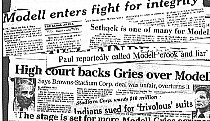
It continued to deteriorate even further during
the 80’s as Gabe Paul, president of the Indians, brought two more lawsuits against
Art. Paul alleged that Modell was a “crook” because his lease with the stadium
was the worst in professional baseball. Once again, the local media picked
up on this story and the word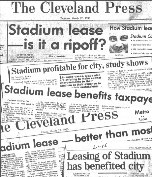

Art Modell never had luck in dealing with local politicians. Previous mayer George Voinavich and City Council President George Forbes made life difficult for Art. The owner of the Browns always had problems passing legislation involving the team and Stadiumcorp. He was denied a 10 year extension on his lease (one which would give him time to totally renovate the stadium out of HIS pocket). He lost his main stadium parking lot to a waterfront development project. New Mayor White offered even more challenges. He wanted new facilities for the Indians and Cavs, and he told Modell to wait (Modell’s lease with the city wasn’t over until 1999) for his wants. Modell just couldn’t figure out why everyone was so negative towards him. He truley believed that he always did what was best for the city and the Browns (and I personnaly believed that he really did try).
When player’s salaries started to skyrocket due
to free agency, Browns profits diminished. Art even took out a loan to pay
for Andre Rison’s signing bonus. Meanwhile, the 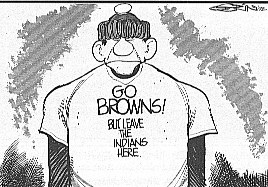
1994 was a relatively successfull year for Stadiumcorp. Even though the Tribe no longer donned the halls of the 60 year old building, Modell did end up making up most of the money from the Indians by hosting events such as a motorcross, a giant Fair, and concerts. All told, Stadiumcorp earned $900,000 of the neccesary $1M needed to break even. 1995 was a different story, however.
There were only 2 major events scheduled for
1995. One was a complete disaster, and the other one was a Rock N Roll Hall
of Fame concert scheduled for the first week of the NFL season. The concert
ended up being a 6 hour event, but Stadiumcorp didn’t get one dime of the proceeds,
as they all went to benefit the new museum. This all happened in September,
six weeks before the move to Baltimore was announced. During this time, the
Indians became the new toast of the town. They were in the World Seeries, and
virtually all of their games were sellouts. Luxury boxes from Jacobs field
stole business from the loges at old Municipal Stadium. Art only managed to
sell 72 of the 102 boxes, as most companies said that they bought boxes at the
Jake instead. The Stadium 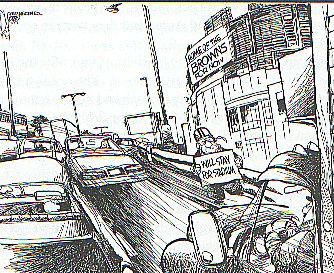
Bob Gries (the man who sued Modell 3 times in the 80’s) found out about the move when it was finalized, before the public new. He sold his stock back to the team, as he would have no part of the move. News of the move began to leak in Cleveland from various sources, including Gries’ son. Even Mike White was now willing to cooprerate with Art. But this came far too late. Mike White stated that he did not believe that the Browns were going to move, and there was no deal in place . That was on November 2nd, 1995.
November 4th, 1995. A day that will live in infamy. That was the day that Arthur B. Modell, owner of the Cleveland Browns (90% since the Gries sale) conducted a telephone interview with Mike Snyder of WWWE AM 1100 in Cleveland from his home. During the short interview, Modell admitted that a deal had been struck with Baltimore, and the team would be moving after the 1995 season. The news hit the public like a ton of bricks. It hit the mayor like a ton of bricks. In the interview, Art gave praise to the politicians of the city. He did not mention the snubbing of past leaders. He did not mention the blow off he recieved from Michael White. He even went as far as to say that Mike White deserved high praise for his efforts. I say different.
Art didn’t attend the next Browns game after the announcement on the advice of his personal friends. The team got hammered 37-10...against who? Who cares...The mayor of Cleveland, however, apparently fell in love with the team overnight. He sued Modell and the NFL for letting the team leave. He got injucntions, hearings, and everything in between. None of it helped, not even the overwhelming vote of the people to pass the stadium rennovation package. It was too little, too late.
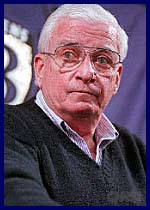 After
all of this, who was to blame? Most blamed Art, and why not? He was the bad
guy. He said that he would never move the team as long as he owned it. Modell
went back on his word. That’s what the media said. That’s what the public
said. Some were in mourning, as others said “Let him go”. But perhaps Modell
wasn’t the only one to blame. What about Mike White? George Forbes? And the
press?
After
all of this, who was to blame? Most blamed Art, and why not? He was the bad
guy. He said that he would never move the team as long as he owned it. Modell
went back on his word. That’s what the media said. That’s what the public
said. Some were in mourning, as others said “Let him go”. But perhaps Modell
wasn’t the only one to blame. What about Mike White? George Forbes? And the
press?
The offer that Modell recieved from Baltimore was worth $292M all told. Cleveland’s offer to the Browns was for $189M. How could that not be enough? Well, the team was broke (at the fault of Modell). The city was broke. The city’s offer wouldn’t be enough to get the Browns out of the red, and they wouldn’t be able to compete. This was the story that was given. Art said that he “had no choice” but to move the Browns to Baltimore. He may not have, in all honesty.
I do blame Art Modell for leaving Cleveland. He signed the paperwork. But maybe Doug Dieken summed it up best when he said that the needs of the team had not been addressed by the city. Maybe he was accurate when he said that Modell, local and state politicians, and the NFL all shared the blame equally. Art didn’t have a choice, financially. The city went broke with Gateway, and the Governor wouldn’t help. The city abandoned the Browns, and the Browns abandoned the city.
We were fortunate, however. We miraculously
kept our team name, colors, history, and heritage. To top it all off, the NFL
agreed that the Browns would be back in Cleveland (in the form of an expansion
team) by 1999, as long as a brand spanking new stadium awaited them. And guess
what? The government miraculously found a cool 200 mil to accomodate them, with
of course, funding from the NFL. The NFL even gave the Browns the first pick
in  the
draft. Sounds like an innocent party to me....
the
draft. Sounds like an innocent party to me....
I hope that you will take the time to read Mr. Poplar’s book. I have merely given an overview of what I have learned. I also hope that the local media in Cleveland will be a little kinder to the new organization. Maybe Mike White won’t be mayor forever, and maybe, just maybe, the new team will trigger the same feelings that the old one did.
I will be adding “The return of the Institution” page very soon, but for now, I hope that this piece has answered some questions regarding the move.
Frank.
|